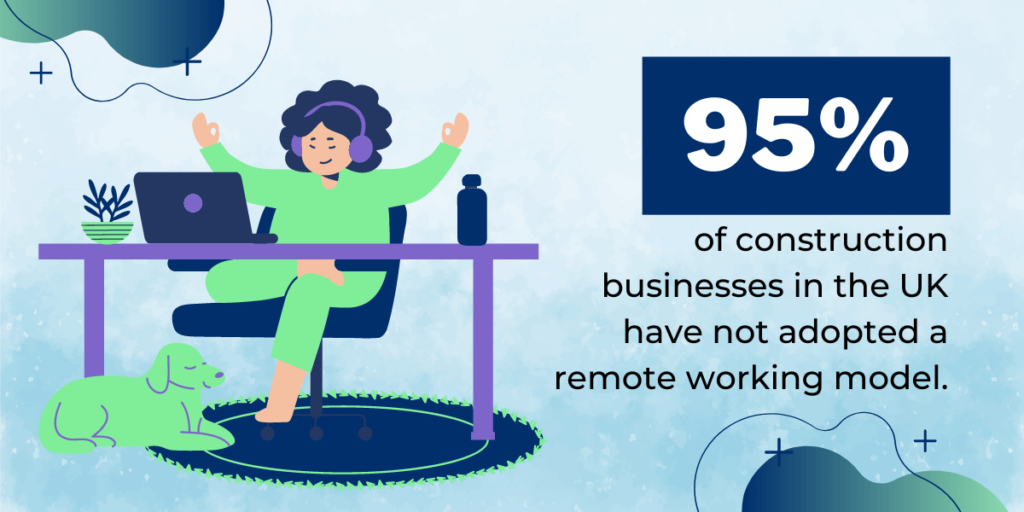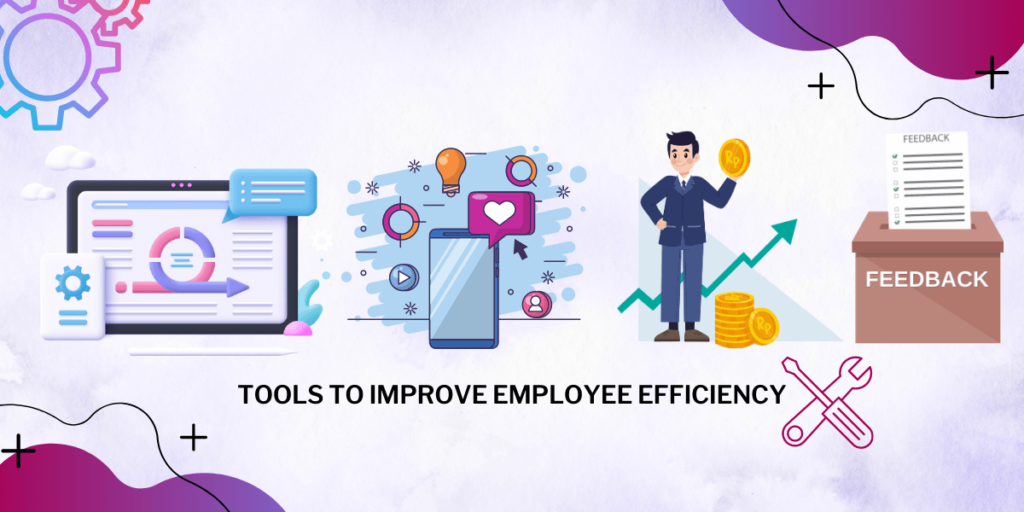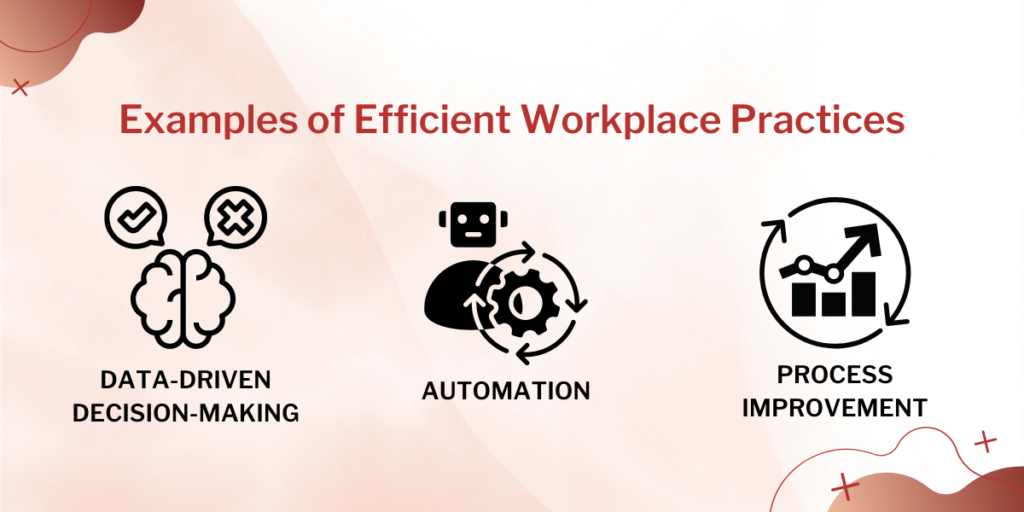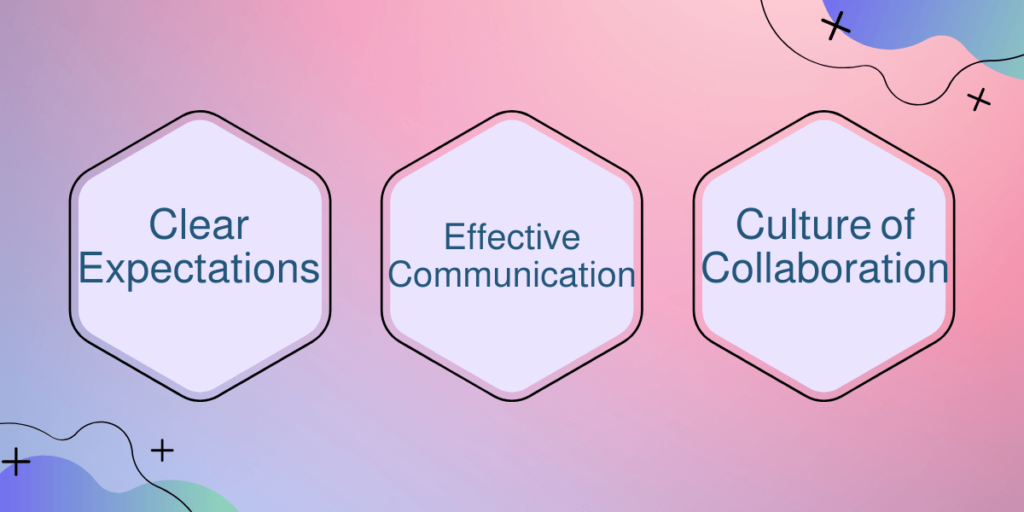Balancing Flexibility and Efficiency in the Evolving Workplace


The modern workplace is constantly evolving, and with this evolution, comes new challenges for employers and employees alike. One of the biggest challenges is finding the right balance between flexibility and efficiency in the workplace. Flexibility and efficiency are both important factors to consider when creating a successful and productive work environment, but they can often conflict with one another.
Flexibility in the workplace, such as remote work and flexible hours, can lead to increased productivity and employee satisfaction. On the other hand, efficiency can lead to cost savings and improved output.
In this blog post, we’ll explore the importance of both flexibility and efficiency in the workplace, and strategies for achieving a balance between the two. Keep reading to learn more!
Modern Workplace: Trends and Pattern for Flexibility
The modern workplace is characterized by increasing flexibility regarding work arrangements, scheduling, and location. Remote work and flexible schedules have become more common as technology has made it easier for employees to work from anywhere. Additionally, there is a growing trend towards results-based work, where employees are evaluated based on their output rather than the number of hours they spend in the office.
This shift has led to an emphasis on employee autonomy and self-management and has also increased the need for effective communication and collaboration tools. Overall, the trend towards flexibility in the modern workplace is driven by a desire for work-life balance, improved productivity, and the ability to attract and retain top talent.

Additionally, that figure from a flexible work site based in Boulder, Colo said 16 % of the 7,300 employees who responded to its annual survey said they were currently looking for a new job because of flexibility issues. Further, 80% (up from 75% in 2018) said they would be more faithful to their bosses if they had flexible job opportunities.
What is Flexibility in the Workplace?

Flexibility in the workplace refers to employees’ ability to control when, where, and how they work. This can include remote work, flexible hours, and job sharing. A flexible workplace or flexible work arrangement can lead to increased productivity, as employees can work in ways that best suit their individual needs and lifestyles. Flexibility can also lead to higher employee satisfaction, as it allows for a better work-life balance. Additionally, flexible employers are more likely to attract and retain top talent.
A survey conducted by the Society of Human Resource Management showed that 52% of employees try to arrange flexible work with their companies. Above 25% said they would take a 10-20 percent pay cut in exchange for a flexible work arrangement. This means that employees want a flexible workplace.
A survey by Statista in 2018, showed 58% of respondents improve their job satisfaction with flexible working hours. 89% of companies report better confinement as a result of their flexible work opportunity.
Benefits of a Flexible Workplace:
Most workers say they want to keep away from the office at least some of the time, and a Gartner survey shows that 90% of HR professionals plan to enable partial remote work. Smartway2’s 2020 return-to-work study shows the same results, including as well 90% of workers preferring a hybrid model while only 2% wanted to return to the office full-time.
A flexible workplace offers the following benefits:
1. Increased Productivity:
A flexible workplace allows employees to work in a way that best suits their individual needs and preferences, which can lead to increased motivation and productivity. This can include flexible hours, remote work, and the ability to take breaks when needed.
2. Employee Satisfaction:
Flexibility in the workplace can lead to improved employee satisfaction and morale. This is because employees can balance their work and personal lives more effectively, which can lead to reduced stress and improved well-being.
3. Retention:
A flexible workplace is also more likely to retain employees because they feel valued and respected. Flexibility can also make it easier for employees to stay with the company long-term, even if they have other responsibilities such as family or children.
Challenges of a Flexible Workplace:
Despite its some benefits, a flexible workplace challenges managers in the following forms:
1. Communication and Collaboration:
One of the major challenges of a flexible workplace is ensuring that employees can effectively communicate and collaborate, despite being in different locations or working different schedules. This can be especially challenging for teams spread out across different time zones or working remotely.
2. Managing and Measuring Performance:
Another challenge of a flexible workplace is managing and measuring employee performance. This can be difficult because traditional metrics such as the number of hours worked or attendance may not be relevant in a flexible work environment. Instead, managers may need to focus on results-based metrics that measure employee output.
3. Ensuring Compliance and Security:
Flexible workplaces also pose challenges related to compliance and security. This can include ensuring that employees follow relevant laws and regulations, such as data protection and privacy laws, and that sensitive company information is not compromised. In addition, companies need to ensure that their remote employees have access to the same security protocols as their in-office employees and that their devices are secure
Examples of Flexible Workplace Practices:
The following flexible work arrangements are possible in a workplace:
Remote Work:
Did you know that 95% of construction businesses in the UK have not adopted a remote working model? Companies deliver an average of $11,000 a year for each employee who works remotely 2.5 days a week.

Remote work is a flexible workplace practice that allows employees to work from a location other than the office, such as their home or a remote office. Remote work can include full-time remote work, where employees work from home all the time, or a hybrid approach, where employees alternate between working from the office and working from home. Remote work is becoming increasingly popular as technology has made it easier for employees to work from anywhere. It offers employees more control over their work environment, more freedom, and flexibility, and can help to improve work-life balance.
Flexible Hours:
A recent study revealed that 78% of flexible employees expressed increased levels of productivity with flexible work arrangements.
Flexible work hours are a workplace practice that allows employees to have a more flexible schedule, such as starting and ending work at different times or taking time off during the day. This can include options such as compressed workweeks, where employees work longer days but have long weekends, or part-time schedules. A flexible work schedule can help employees balance their work and personal lives, leading to improved morale, reduced stress, and increased productivity.
Job Sharing:
Job sharing is a flexible workplace where two or more employees share a single full-time position, typically working half-time each. This can be a great way for employees to continue working while also being able to take care of their responsibilities, such as children or elderly parents. Job sharing can also help reduce turnover, as it allows employees to maintain a connection to the workforce while taking time off as needed. Additionally, it can also bring fresh perspectives and ideas to the role, as different individuals are occupying the role at different times.
Get more out of your business
Get the best employee engagement content every week via mailing list
What is Employee Efficiency?
Efficiency in the workplace refers to the ability to perform tasks and processes in the most efficient manner possible. This can include automation, process improvement, and data-driven decision-making. An efficient workplace can lead to cost savings, as it reduces the amount of time and resources needed to perform tasks. It can also improve output, as processes are streamlined and optimized. Additionally, an efficient workplace can lead to better decision-making, as data is used to inform decisions rather than relying on intuition or assumptions. Anyhow, research shows that workers are beneficial about 60% of the time and are more likely to be productive working from home. Every 3 minutes of interruption at work and ineffective meetings contribute to the lack of productivity of the employees.
Tools to Improve Employee Efficiency
The workplace is constantly evolving and it can be difficult for companies to balance the need for flexibility with the need for efficiency. Flexible work arrangements, such as remote work and flexible hours, offer employees more control over their work environment, but they also present challenges related to managing employee performance, ensuring compliance and security, and improving employee efficiency. To ensure that these needs are met while still providing a flexible working environment, there are several tools available that can help improve employee efficiency in an evolving workplace.

1. Project Management Software:
Project management software allows teams to plan, organize and track progress on projects. This can include tools such as Asana, Trello, and Monday.com, which can help to keep track of tasks and deadlines, assign responsibilities, and communicate progress to the team. This can help to improve employee efficiency by providing a clear overview of what needs to be done, who is responsible for what, and what the status of a project is.
2. Communication and Collaboration Tools:
Communication and collaboration tools are essential for remote teams to stay connected. Tools such as Slack, Microsoft Teams, and Zoom are great for real-time communication and can help teams to communicate more effectively, share files and documents, and collaborate on projects.
3. Time Tracking and Monitoring Software:
Time tracking and monitoring software allow employees and managers to track the time spent on different tasks and projects, and can help to identify areas where time is being wasted. Tools such as Toggl and RescueTime can help employees to become more aware of how they are spending their time and can help managers to identify where improvements can be made.
4. Employee Engagement and Feedback Tools:
Employee engagement and feedback tools, such as 15Five, TINYpulse, and Bonusly, can help managers to stay connected with their teams and understand how they are feeling. These tools can help to identify areas where employees are struggling and can help managers to address these issues. They can also help to improve employee satisfaction by providing a platform for employees to share their thoughts, ideas, and concerns.
Importance of An Efficient Workplace:
Efficiency is, of course, very important for the organization. We can summarize some of the important points of how efficiency adds to overall organizational success. A CareerBuilder study found that 53% of workers surveyed are less productive when their work conditions are too exhaustive. According to Gallup’s State of the Workplace, 85% of workers are either disengaged or actively disengaged, resulting in $7 trillion in lost productivity.
An efficient workforce or a workplace with efficient workers offers the following key benefits to the organization:
Cos Savings:
An efficient workforce helps the organization in reducing costs and saving money. By optimizing processes, streamlining tasks, eliminating waste, and automating processes an organization can save a considerable amount of money.
Increased Productivity:
An efficient workforce results in increased productivity as tasks are completed quickly and with accuracy. This can help the organization to complete projects on time and reach its goals faster.
Improved Quality:
An efficient workforce also helps in improving the quality of work as tasks are completed with care and attention to detail. This leads to better customer satisfaction, improved reputation, and brand image.
Streamlined Processes:
Efficiency also helps to streamline processes and ensure that tasks are completed in an organized manner. This can help the organization to reduce costs, improve customer service, and ensure that tasks are completed most efficiently.
Examples of Efficient Workplace Practices:

Efficient Workplace Practices are essential for businesses to ensure that they are functioning at their best. Three examples of Efficient Workplace Practices include automation, process improvement, and data-driven decision-making.
Automation:
Automation helps save time by streamlining tedious manual processes, like mundane tasks such as sending out emails or onboarding new employees.
Process Improvement:
Process improvement gives efficiency a boost by finding ways to do things more quickly and cost-effectively.
Data-driven Decision-making:
Finally, data-driven decision-making allows businesses to make better decisions based on evidence rather than guesswork. These Efficient Workplace Practices can help business owners and operators reach their goals with ease and efficiency.
Balancing Flexibility and Efficiency in the Evolving Workplace
We read everything about employee flexibility and efficiency at the workplace in detail. Now, coming to the main area we wanted to know, how to balance flexibility and efficiency. Having granted too much flexibility to employees can affect employees’ efficiency and thus organizational goals may not be achieved or if achieved the resources will be wasted due to lack of efficiency. Thus, managers or employers face the challenge of finding a balance between flexibility and efficiency. Now, we will discuss the possible challenges managers face and the tips to overcome those challenges.
The challenge of finding a balance between flexibility and efficiency in the workplace is that they can sometimes be at odds with one another. For example, remote work can increase flexibility but may make it harder to maintain efficient communication and collaboration among team members. Finding a balance between the two requires setting clear expectations and guidelines, effective communication, and fostering a culture of collaboration
The Challenge of Finding a Balance Between Flexibility and Efficiency
The challenge of finding a balance between flexibility and efficiency lies in understanding how to reconcile two supportable but opposite goals. To better understand the topic, let’s revise both terms slightly.
Flexibility, often seen as the ability to adapt quickly to changes and unexpected circumstances, can be difficult to measure when evaluating processes and operations. Efficiency on the other hand—seemingly focused on streamlining procedures with a goal of cost savings—can lack that element of flexibility.
The purposeful combination of flexibility and efficiency is critical when deciding what structure best fits a company’s overall approach, and can ultimately provide the most effective outcome. The key, as with most strategic decisions in business, is determining what works best for each given situation.
Further, the right mix of efficiency and flexibility should always be an ongoing evaluation process; it may require trial and error and creativity to find the ideal balance that meets everyone’s needs.
Strategies for Achieving Balance Between Flexibility and Efficiency:

According to the December 2021 survey, 74% of employees will look for another job if they are required to work three or more days a week in an office. Businesses, both large and small, continue to experience this. Recently, tech workers have protested strict workplace rules and in some cases even resigned. Managers can achieve the balance between workplace flexibility and efficiency by implementing the following strategies:
Setting Clear Expectations:
Managers should ensure that all employees know the expectations for each task or project. This will help to ensure that tasks are completed within a specific timeframe and that all team members are on the same page when it comes to achieving their goals.
Effective Communication:
Effective communication is essential for any successful team. It helps to ensure that everyone is on the same page and eliminates any misunderstandings about expectations or goals.
Fostering a Culture of Collaboration:
Creating a culture that promotes collaboration and encourages employees to work together can help managers achieve their goals efficiently. This includes fostering an environment where employees feel comfortable offering new ideas and solutions, as well as working with others to find the best possible solution.
By implementing these strategies, managers can find the perfect balance between flexibility and efficiency in the workplace. Not only will this help to ensure that tasks are completed on time and within budget, but it will also create a more positive work environment and increase the overall productivity of the organization.
The shift to working from home has made finding the balance between flexibility and efficiency even more important. With many employees now working remotely, managers need to focus on creating an effective and efficient structure that allows employees to be productive while still feeling comfortable and supported.
Therefore, managers must find the right balance between flexibility and efficiency to create an environment that is both flexible and efficient. By tailoring their approach to each situation, managers can create the perfect balance between flexibility and efficiency in the workplace and achieve their organizational goals.
Conclusion
In conclusion, the balance between flexibility and efficiency in the workplace is vital for the success of any organization. Flexibility can lead to increased productivity and employee satisfaction, while efficiency can lead to cost savings and improved output. Companies can successfully balance the two by setting clear expectations, communicating effectively, and fostering a culture of collaboration. As the workplace continues to evolve, companies need to consider their approach to balancing flexibility and efficiency to stay competitive and meet the needs of their employees.


